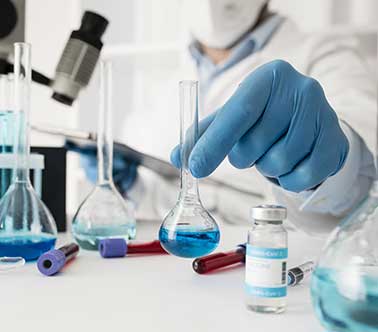Ethanol, Isopropanol, and Acetone: Comparing Pharmaceutical Grade Solvents

Ethanol, Isopropanol, and Acetone: Comparing Pharmaceutical Grade Solvents
When comparing pharmaceutical grade solvents in this category for a particular application, whether in industrial manufacturing or home extraction, it’s essential to understand the unique properties, characteristics, and advantages of each option. At Simple Solvents, we pride ourselves on providing the highest quality pharmaceutical-grade ethanols and solvents, with a strong commitment to exceptional purity. In our quest to empower customers with the knowledge necessary to make informed choices, we present this in-depth comparison of three popular pharmaceutical-grade solvents: ethanol, isopropanol, and acetone.
Each of these solvents used possesses its own set of properties and benefits, catering to distinct applications and industries. By delving into the varying attributes and characteristics of these solvents, such as polarity, solubility, evaporation rate, toxicity, and flammability, we can provide a comprehensive overview to help readers make educated decisions when choosing the perfect solvent for their specific needs.

In this comprehensive guide, we will be comparing pharmaceutical grade solvents and the chemical structures and properties of ethanol, isopropanol, and acetone, and explore their wide-ranging applications in industries such as pharmaceuticals, cosmetics, and specialty manufacturing. Additionally, we will discuss their respective safety profiles, advantages, and potential drawbacks, arming our customers with the information they need to make the best choice for their project or business requirements. Various grade solvents are acceptable when it comes to using them for your processes, and we leverage the analytical laboratory to ensure we meet all required customer specs.
From the professional chemist to the home extraction enthusiast, this guide aims to serve as a valuable resource for those at any level of expertise. By providing the knowledge necessary for choosing the ideal pharmaceutical-grade solvent, we hope our readers can achieve optimal results in their endeavors while maintaining the highest standards of safety and quality.
1. Chemical Structures and Properties
Understanding the chemical structures and key properties of each solvent is crucial in determining their suitability for specific applications. Here is an overview of the structures and essential attributes of ethanol, isopropanol, and acetone:
– Ethanol (C2H5OH): Ethanol, or ethyl alcohol, is a primary alcohol that is both polar and highly miscible in water, due to its hydroxyl (-OH) group. It is often used as a versatile solvent, disinfectant, or fuel additive.
– Isopropanol (C3H8O): Also known as isopropyl alcohol or 2-propanol, isopropanol is a secondary alcohol, with its hydroxyl group on the second carbon atom. It is slightly less polar than ethanol and also has excellent solvency and water miscibility.
– Acetone (C3H6O): Acetone, or propanone, is a highly volatile and flammable solvent with low polarity. It is a ketone, containing a carbonyl (C=O) functional group, and has lower water miscibility compared to the previous two alcohols.
2. Applications and Industries
Knowing how the solvents are utilized across various industries can further illustrate their suitability for certain purposes. The following outlines some common applications of ethanol, isopropanol, and acetone:
– Ethanol: This solvent is widely used in the pharmaceutical, cosmetic, and food industries for various purposes, including extraction, formulation, and as a preservative. Its antiseptic properties also make ethanol suitable for disinfection and sterilization.
– Isopropanol: Similar to ethanol, isopropanol finds applications in pharmaceutical and cosmetic manufacturing, especially for topical products. With its strong solvency and low evaporation rate, it is perfect for cleaning electronics, thinning inks, and removing adhesive residues.
– Acetone: Due to its low polarity and high volatility, acetone is an excellent choice for cleaning and degreasing applications, such as in paint and polymer industries. It is also used as a solvent in nail polish removers and lab settings, primarily for nonpolar compounds.
3. Safety Considerations
Before selecting a solvent, it’s essential to understand their safety profiles, including flammability, toxicity, and precautions when handling:
– Ethanol: Highly flammable and with a moderate degree of toxicity upon ingestion or absorption, ethanol usage requires adherence to strict safety guidelines. Adequate ventilation, protective gear, and storage conditions are essential to prevent fire hazards, overexposure, and adverse effects on health.
– Isopropanol: Similar to ethanol, isopropanol is also highly flammable and moderately toxic. Proper handling and storage precautions must be adopted to prevent accidents and minimize negative health impacts from inhalation, ingestion, or skin contact.
– Acetone: Acetone is highly flammable and volatile, making proper handling and storage critical. While its toxicity level is lower than ethanol and isopropanol, exposure to high concentrations can still lead to adverse health effects. Ensure adequate ventilation, proper storage, and appropriate personal protective equipment when working with acetone.
4. Comparing Pharmaceutical Grade Solvents: Advantages and Potential Drawbacks
Weighing the merits and potential downsides of each solvent can help inform your decision-making process:
– Ethanol: With excellent solvency, antiseptic properties, and a wide range of applications, ethanol is a versatile solvent. However, its high flammability and moderate toxicity demand stringent safety measures.
– Isopropanol: Isopropanol shares many benefits with ethanol, including strong solvency and water miscibility. It is also less expensive compared to ethanol. However, its flammability and toxicity warrant careful handling and adherence to safety protocols.
– Acetone: As a low polarity solvent with exceptional cleaning and degreasing properties, acetone is invaluable for specific applications. However, its volatile nature and high flammability necessitate stringent safety practices during handling and storage.
Conclusion
Choosing the ideal pharmaceutical-grade solvent—whether it’s ethanol, isopropanol, or acetone—requires a thorough understanding of their unique properties, applications, and safety profiles. Armed with the information provided in this comprehensive guide, you can now make informed decisions tailored to your specific needs and ensure the highest quality results in your projects.
At Simple Solvents, we are committed to providing customers with the purest pharmaceutical-grade solvents on the market and comparing pharmaceutical grade solvents allows us to do so. Equipped with the knowledge and resources necessary to make educated choices, businesses and hobbyists alike can achieve optimal outcomes while maintaining safety and quality standards.
